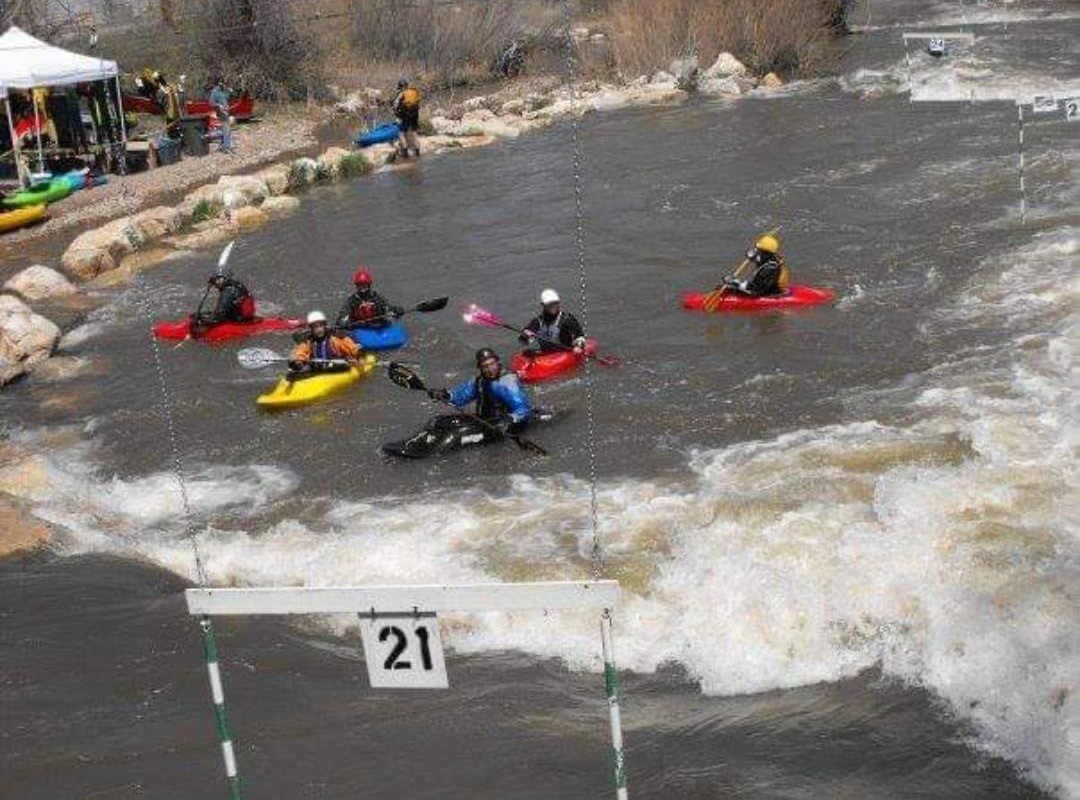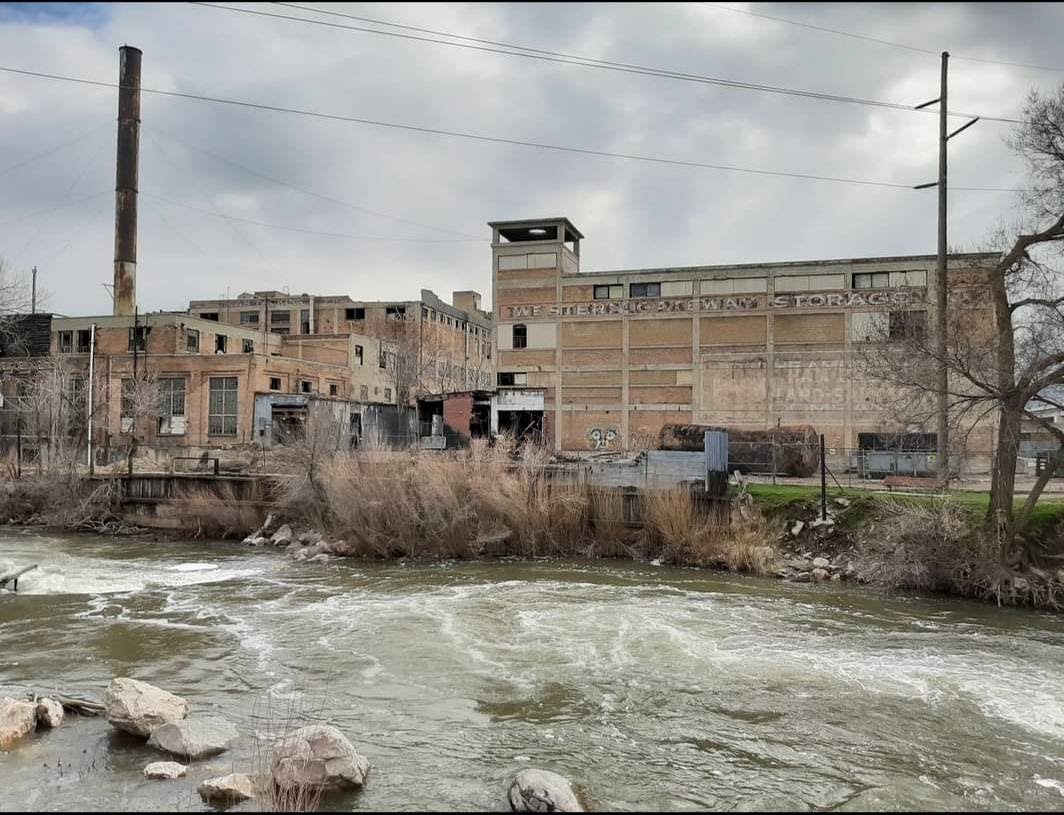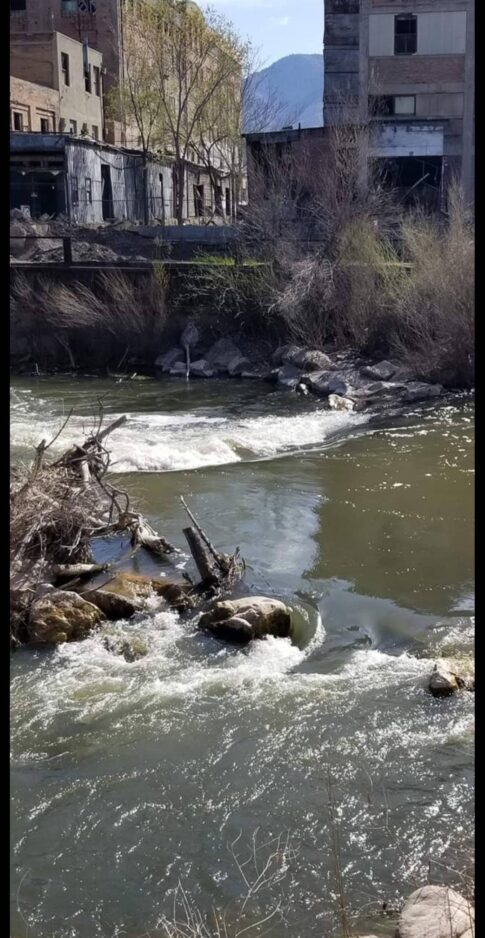After 9 year delay, Ogden kayak park and river restoration nearly completed
- This photo taken in 2020 shows people kayaking on the Weber River near the 24th Street bridge in Ogden.
- In this undated photo, kayakers paddle along the Weber River at the Ogden kayak park.
- This photo shows recent new construction in progress along the Weber River in Ogden. The river is divided into a recreational passage, at right, and natural habitat for fish.
- This undated photo shows the former Swift Building next to the Weber River in Ogden. The Swift Building was demolished in May 2020.
- In this undated photo, Kayakers prepare to venture onto the Weber River in Ogden.
- This undated photo shows the Weber River and the former Swift Building, which was demolished in May 2020.
OGDEN — An Ogden resident is criticizing the city for failing to maintain a popular recreational park along the Weber River, but city officials point to work now being done as evidence the problem is being addressed.
Still, for David Wolfgram and other outdoor enthusiasts who use the waterway, the repairs have been a longtime coming.
“They left it a s— show,” Wolfgram said of the Ogden kayak park.
High water levels, inadequate leveeing and efforts to recover a drowning victim led to the deterioration of the park, according to Ogden City Engineer Justin Anderson.
Members of the O-Town Kayakers Facebook group have been waiting nine years for the city to fix the park after the river was diverted and boulders were moved to search for 4-year-old Corbin Anderson, who fell into the river in 2012.
Wolfgram claims this part of the river sat completely destroyed until 2021, when the city began excavating for the new park.
Kayakers visited the park year-round making video clips for television media trying to raise awareness. “We used it because we didn’t want to lose it,” Wolfgram said.
Plans to fix the park have been underway since 2018, according to Anderson. City engineers and contract company River Restorations are working collaboratively to improve functionality and bring the river back to a more natural state.
Creating more room along the riverbank for floods, reestablishing native wetlands with willow trees, sedges and shrubs in addition to a fish passage are part of the naturalization efforts being made to make the park more sustainable.
Water features are designed in such a way as to reduce the likelihood of hazards such as foot entrapments, according to Eric McCulley, a watershed ecologist with River Restoration, which specializes in river hydraulics.
Three water features on the east side of the river were installed to produce an upward thrust to push kayakers downstream in a bobbing fashion to avoid being recirculated in an eddy, a current of water running contrary to main current. Anderson believes younger children can enjoy the river more safely on the west side where the fish passage is located.
Wolfgram and his wife, Shauna, worked with fellow kayakers to start an after-school program at the Marshall White Center for kids interested in kayaking. The purpose of the program began as a way to educate children about rivers, but also served to provide inner-city kids with an opportunity they may not otherwise experience.
Mike McBride, communications manager with Ogden City, believes the kayak park feeds into the idea that Ogden is a high-adventure recreation city.
After a storm in 2011 damaged a sewer line crossing the Weber River, the city applied for emergency money from the Federal Emergency Management Agency and received a Hazard Mitigation Grant for $415,420.
In 2018, environmental hazards were found on property adjacent to the kayak park. After receiving clearance to be in the river, the city placed a sheet pile wall under the river at the demarcation line to prevent any leaching of contaminants.
Wolfgram has no reservations about getting in the river; however, he does recall smelling petroleum on more than one occasion. Members of O-Town Kayakers also reported finding syringes, trash and other debris caught in eddies when a homeless encampment took root in 2007.
“It’s way less sketchy now,” Wolfgram said.
For McCulley, Ogden is a progressive city, working hard to improve quality of life close to home.
Since 2018, the City of Ogden has been awarded four grants for restoration efforts, including a $150,000 Utah Outdoor Recreation Grant specifically tied to doing kayak work.
In addition to grant funds matched by the city, the Dumke Foundation made a very generous donation, according to Anderson, with total funds of about $971,000 for the new kayak park set to be completed in November.
The Adopt-A-River program in Ogden is designed to keep the rivers healthy and clean. Applications to volunteer can be found on the city’s website.















